Indistylemen
Should You Wear Pleated Pants?
- Get link
- X
- Other Apps
For some, the very mention of pleated pants is enough to evoke flashbacks to the worst menswear fashions of the ‘80s and ‘90s. With current trends favoring flat-front cuts, the question of whether you should wear pleats today is often answered with a resounding “no.” It’s time we shed our existing negative perceptions and rethink pleated pants; you can definitely wear them, and we’ll tell you how.
What are Pleated Pants?
In the world of menswear, pleats can be defined as gathered folds of fabric located below the waist, in the area known as the rise, or simply the front, on a pair of trousers. On flat-front trousers, as the name states, the fabric in this area is smooth. Pleats can either be forward facing, in which the folded fabric points inward, toward the fly of your pants, or reverse—pointing in the direction of the pockets. The British style generally favors inward-facing pleats whereas pants in a more Italian, specifically, Neapolitan style usually face outward. In terms of which is better, forward pleats usually receive less criticism as they tend to remain flat, while outward ones may open and stay open, resulting in ballooning fabric. The number of pleats that you have can vary: usually, one or two, though some men have experimented with three and even four pleats.
Why Do Pleated Pants Have a Bad Reputation?
The short answer is that they are simply out of style. In line with the material excesses of the ‘80s, pants from that decade often displayed an excess of material in the form of pleats. Because pleats gather extra fabric in the rise area of a pair of pants, below the waist, if too much fabric is added there it can result in unsightly ballooning in the groin area. Some poor trouser designs also expanded this concept, rather literally, to create more room throughout the pants, especially in the legs. This resulted in a baggy, voluminous garment stereotypically identified with middle-management drones wearing big khakis on casual Friday.
However, if you look at menswear fashion illustrations, advertisements or actors from earlier eras, you’ll often see fuller garments and an abundance of pleats that make them look sharp. Cary Grant wore suits with pleated pants as did Sean Connery in the role of James Bond. Thus, the disdain for pleated pants nowadays stems from the overall preference for slimmer and more fitted looks rather than anything inherently wrong with pleats.
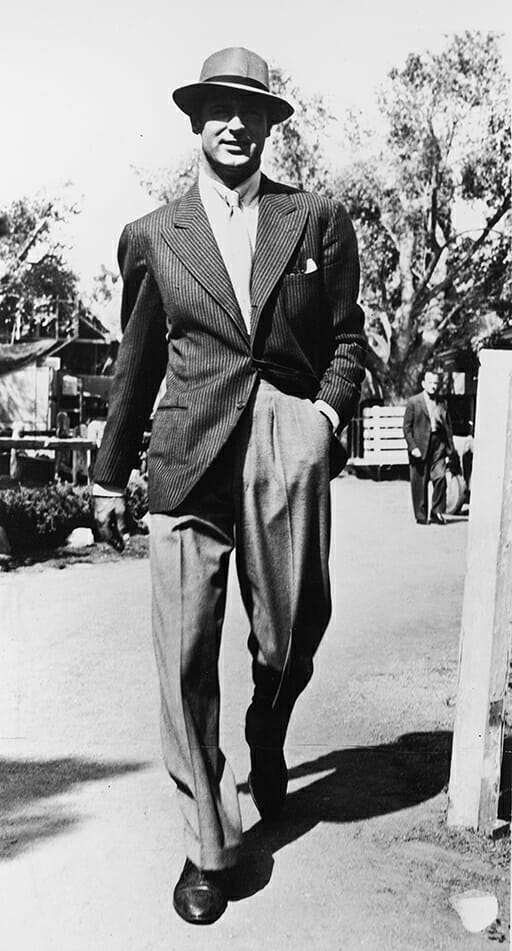
British born actor Cary Grant (1904 – 1986) walking outdoors wearing a pinstripe jacket and a hat, 1940s. (Photo by Getty Images)
Some of the scorn is a matter of generational bias. Pleated pants are weighed down with the connotations of being traditional and stodgy, what your parents or grandparents wore, the garment of old men, as opposed to the youthful minimalism of slim, flat-fronted pants. Gentleman’s Gazette readers, who enjoy classic style, are less likely to reject pleated pants on the basis of traditionalism, but those who do prefer contemporary style will also find versions that appeal to them.
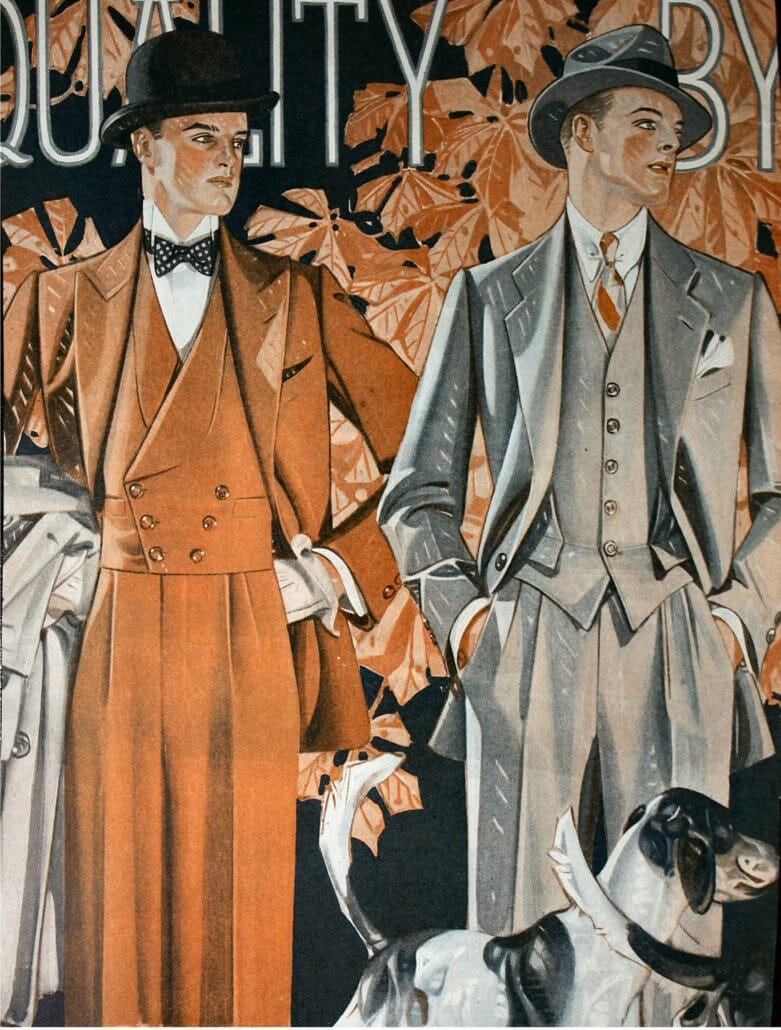
Vintage illustration of suits featuring double pleats from Kuppenheimer, a menswear retailer based in Chicago, photographed by John Blah.
Pleated Pants Today
Some of the issues of past decades have been solved simply by putting pleats on an otherwise more close-fitting pair of trousers, and beginning around 2016 we began seeing these on the designer menswear runways. However, regardless of the vagaries and vacillations of fashion from decade to decade or year to year, it is always possible to find moderately cut pleated pants that are in the “Goldilocks zone”–just right–neither too slim nor too loose fitting and thus timeless. When seeking enduring style, it’s hard to go wrong, no matter your age, by taking the middle ground, just like choosing a moderate lapel and tie width instead of going too skinny or too wide.
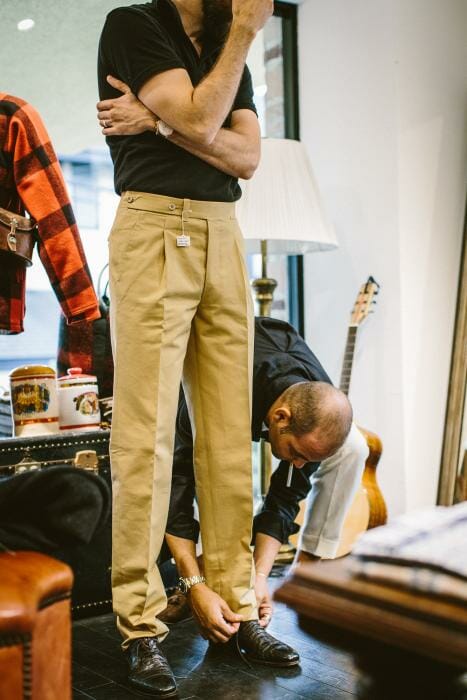
Simon Crompton of Permanent Style wearing Ambrosi pleated pants with a moderate cut
So, Who Should Wear Pleated Pants?
Because of the extra fabric directly below the waist, those who want more comfort and ease of movement of the lower body would be wise to wear pleats. One situation that demands this is if you have some weight around your middle; pleats can help disguise this where more fitted flat-front pants would emphasize the shape of your belly. This is especially true if you wear your pants at your natural waist rather than low on your hips. The extra fabric provided by the pleats and the visual details they offer is enough to hide the size of your waistline.
In the case of Sven Raphael Schneider, he favors pleated pants for a reason that many men experience: they have thicker thighs that are simply not accommodated by modern, slimmer cuts.
On the other hand, it’s usually said that if you have a thin build, pleated pants are a risky proposition because wearing them will give you a baggy, unkempt appearance. However, this is only true if you go for cheap, mass-manufactured pleated pants that are loose all over. If you are lean and like pleats, you can pull off the look by emulating the Italians, especially the style of Naples. They wear pleated trousers with well-fitted legs and often in lighter weight fabrics that avoid a heavy, blousy look. The key is, again, to ensure the cut of the pants is not too full. Otherwise, the result will, at best, give you a definitively retro appearance or, at worst, make you look clownish.
If you frequent menswear forums and comment pages online, you’re likely to encounter the complaints of men who have developed large thighs or seats from working out and are trying to find well-fitting trousers. A simple solution for these guys might be to try wearing pleated pants. The fact that this isn’t usually proposed as an option speaks to the average person’s negative bias against the style. Hopefully, we can counteract this perception.
Interestingly, pleats can be useful both if you sit for a long time and if you are highly active. Long-term sitting, besides increasing your risk of dying, can be more uncomfortable with the greater constriction of flat front pants. They eventually feel snug. On the other hand, if you have a job where you get up and down a lot and are moving about, the opening of the pleats can give you some extra mobility. Lastly, although it has been a rather taboo subject, it should also be mentioned that if you simply want more room for your privates, pleated pants will do the trick.
How to Wear Pleated Pants
In addition to choosing an appropriate overall fit, there are several things you can do when wearing pleated pants to enhance their appearance.
Start with Lighter Fabrics
To my eye, pleats look best on lighter-weight fabrics. The heavier weight of a material like flannel contributes to the sense of volume created by pleats and can lead to a more old-fashioned look. It can certainly still be done with winter-weight cloth, but proper fit is even more crucial. A cuff can also help add weight to the hem of heavier-weight pleated pants for a trimmer look.
Opt for Fewer Pleats
Single pleats on dress pants blend into and continue the crease that runs up the center of each leg. This creates a longer and sharper line than in flat front pants, where the crease is broken by the smooth rise. So, single pleats are safe, but double pleats can look more relaxed or may be required if your body type demands them.
Pair Pleats with a High Rise
The contemporary style of wearing pants at the hips with a low rise is more suitable to flat-front trousers than pleated ones. The added fabric and the pleats themselves generally create a higher rise on the finished garment, which requires wearing them around your waistline. Worn in this way, they also do their job of flattering and disguising a stomach that isn’t perfectly flat.
…with or without Cuffs
A search of images online will show a roughly 50-50 divide of pleated pants with or without cuffs. The idea behind getting cuffs is that they add visual weight and emphasis at the bottom of the trousers to counterbalance the appearance of pleats at the top. Cuffs do make the pants a bit more informal and some might see them as more traditional; for a more contemporary look, omit them.
Tailor Them with No Break
Given the potential associations of pleated pants with retro style, you’ll want to avoid a break to look modern. A break at the bottom of your trouser legs can enforce the perception of pleated trousers as sloppy looking. Moreover, a break, as the name suggests, interrupts the continuous crease down the front of your pants legs that a pleat can give you, so if you want to emphasize that sharp look, avoid a break. Lastly, if you decide on cuffs for your pleated pants, as with any pair of cuffed trousers, the convention is to have them just touching the top of your shoe.
Combine Pleated Pants with a Jacket
If you’re cautious about pleats, the easiest way to wear them would be with a jacket, usually as the bottoms of a suit. The jacket minimizes the visibility of the pleats but lets them do their job. They’re still a feature but not too obvious, and it looks like you could very well be wearing flat-front trousers if your jacket is buttoned. With a suit, you may want to go with inward pleats, because of their association with greater formality, and no cuffs. If you are bolder and want a stronger emphasis on your pleats, I recommend observing what the Neapolitan tailors do, especially Salvatore Ambrosi. Wear them high waisted with side adjusters along with an unbuttoned sport coat to carry a sense of summer sprezzatura or invoke a Mediterranean vibe. Alternatively, really flaunt your pleated pants by wearing them with a shirt alone, either a polo or a dress shirt with the collar unbuttoned and the sleeves rolled up.
Conclusion
Though it may be difficult to get the man on the street to choose pleated pants, those with a true appreciation of style and an interest in variety know their value. Ultimately, although pleated pants are especially suitable for specific body types, nearly any man can wear them–it’s just a matter of getting ones that fit well and trying them on yourself. Perhaps, if you don’t have them yet, you can broaden your wardrobe and expand your style. Are we “preaching to the choir”? Do you already enjoy pleated pants, or are they something you would take a pass on? Share your views!
from Gentleman's Gazette https://ift.tt/2Hgc3UM
- Get link
- X
- Other Apps
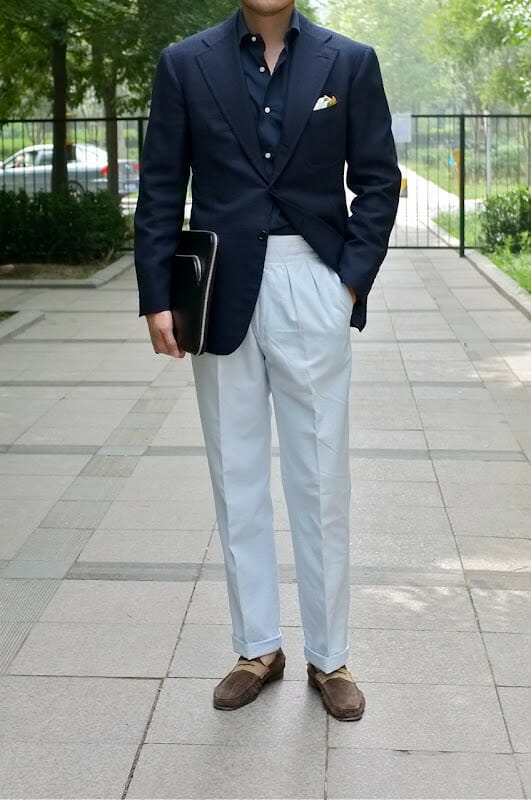
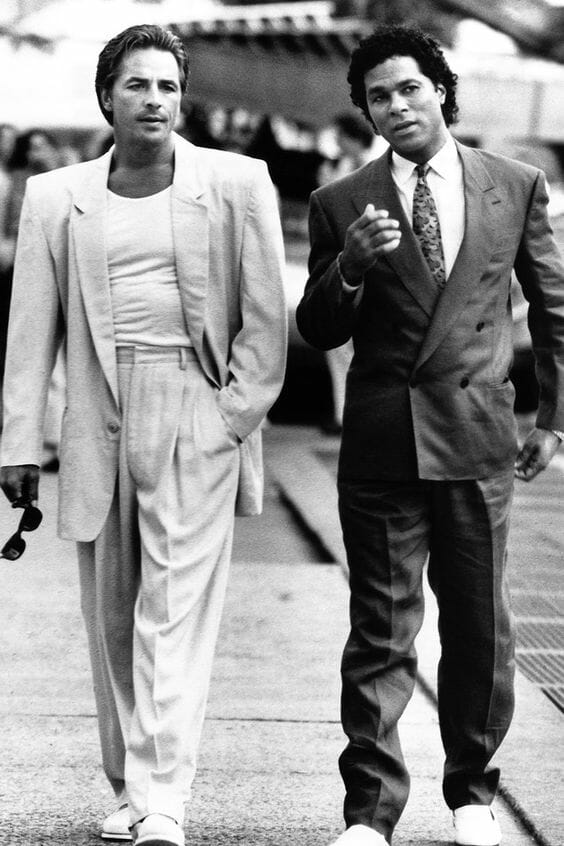
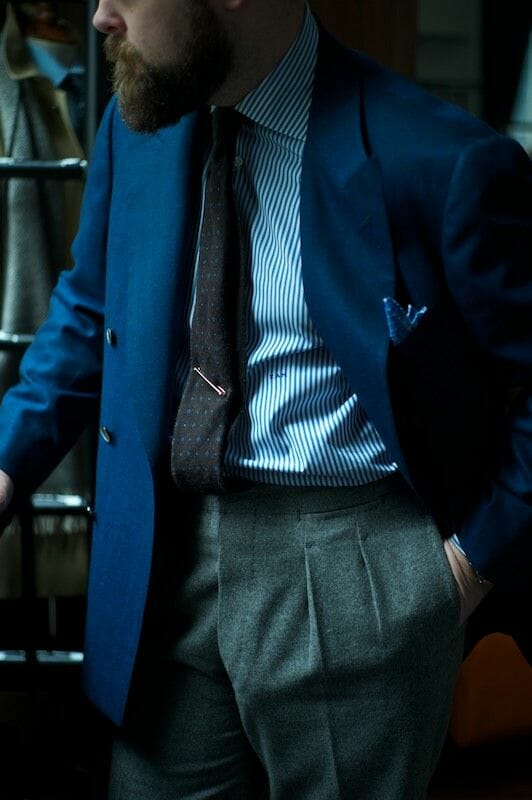
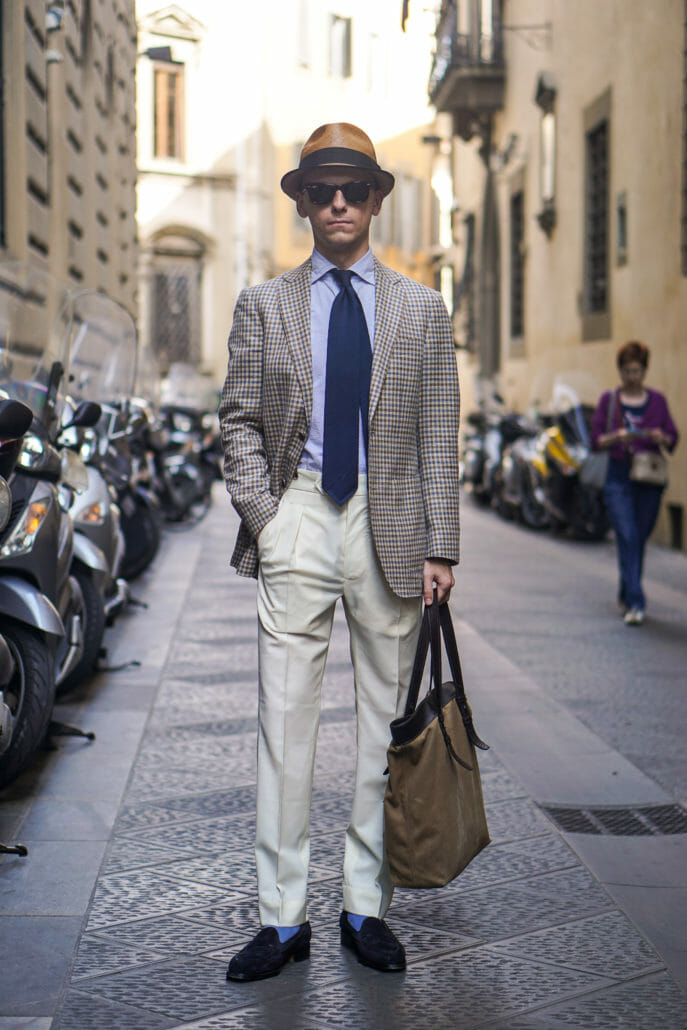
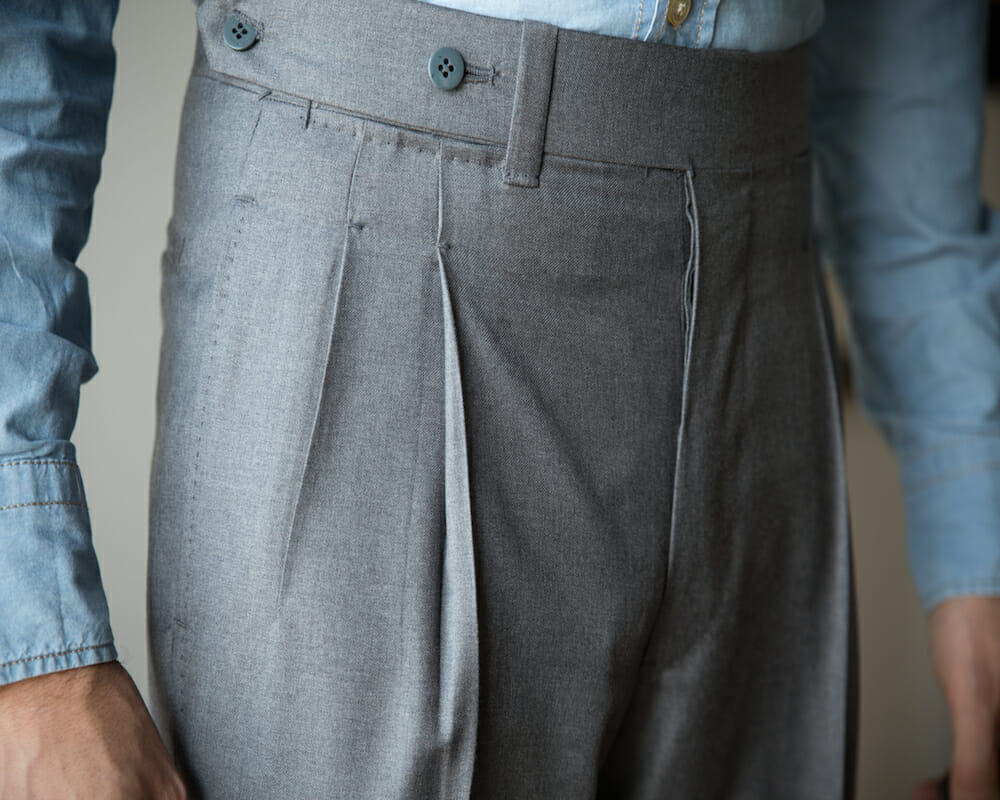
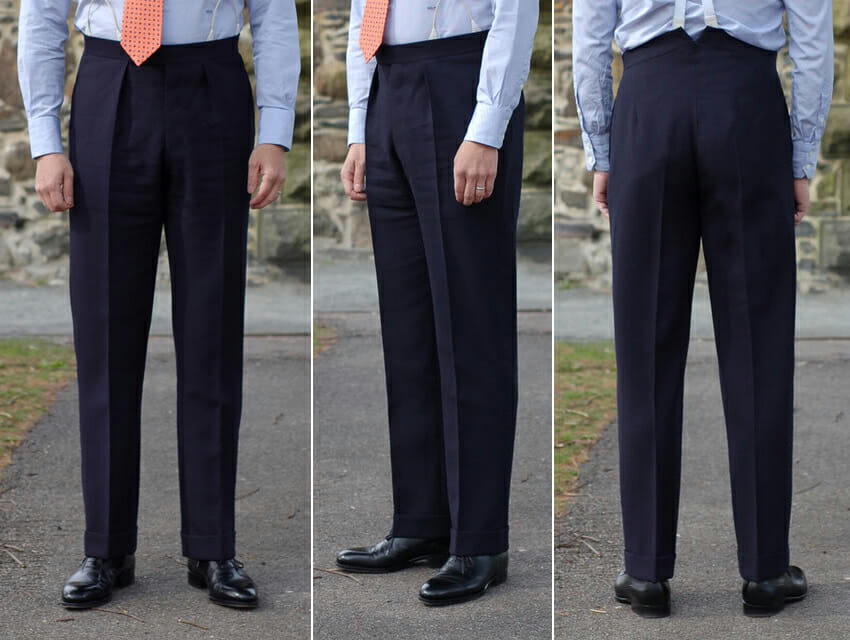
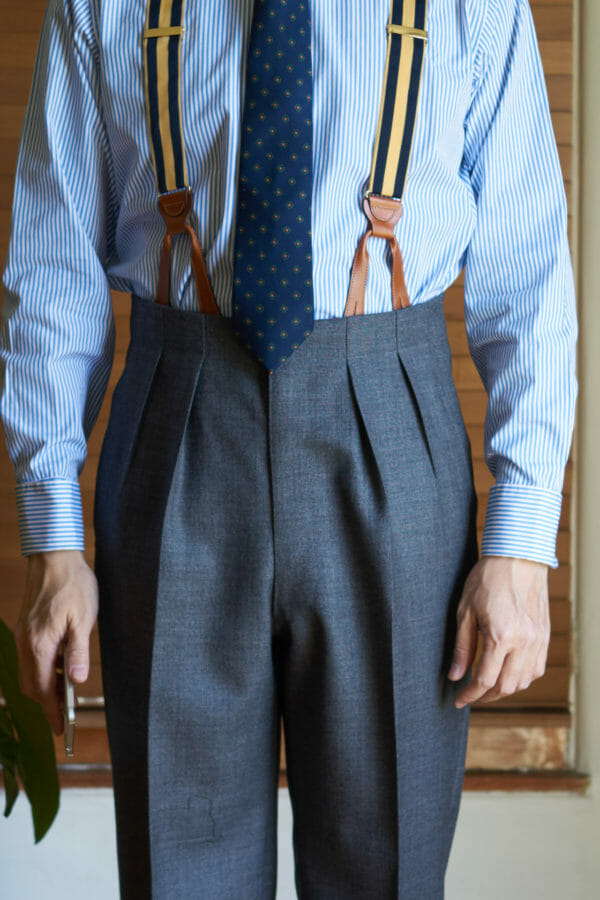

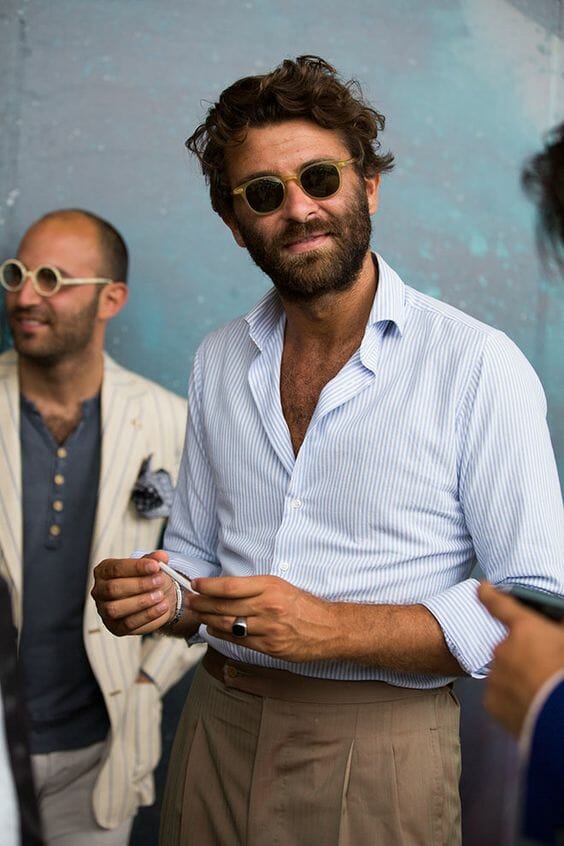
Comments
Post a Comment
thanks for your feedback